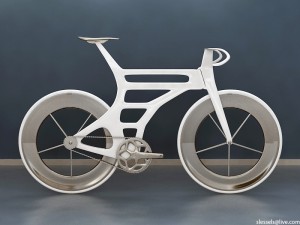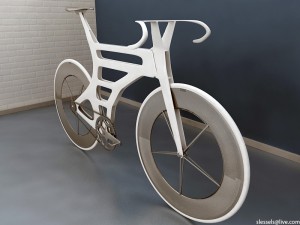 Simon L. (aka Ess) is a designer who is working on an interesting aerodynamic frame design. His blog is chronicling the development of the bike, which features openings in the head and seat tubes to allow air to pass through.
Simon L. (aka Ess) is a designer who is working on an interesting aerodynamic frame design. His blog is chronicling the development of the bike, which features openings in the head and seat tubes to allow air to pass through.
In one of his posts, Ess lists a few of the design details that help to minimize the bike’s frontal area:
1. The frame is hollow with open front and back vents.
2. Sides of the frame are parallel (made possible by placing the back cog on the outside of the frame, which suggests that you can remove the back wheel and keep the chain/sprocket in place!).
3. The headset is split into two (top and bottom).
4. Handlebar stem split into two fins
5. Integrated seat post created from two fins
6. Seat attached to the integrated seat post using a mono-fin
 The design is still in the development stage, but I will continue to follow Ess’ blog to see how it progresses. It looks pretty interesting so far.
The design is still in the development stage, but I will continue to follow Ess’ blog to see how it progresses. It looks pretty interesting so far.

Leave a Reply to Will Cancel reply